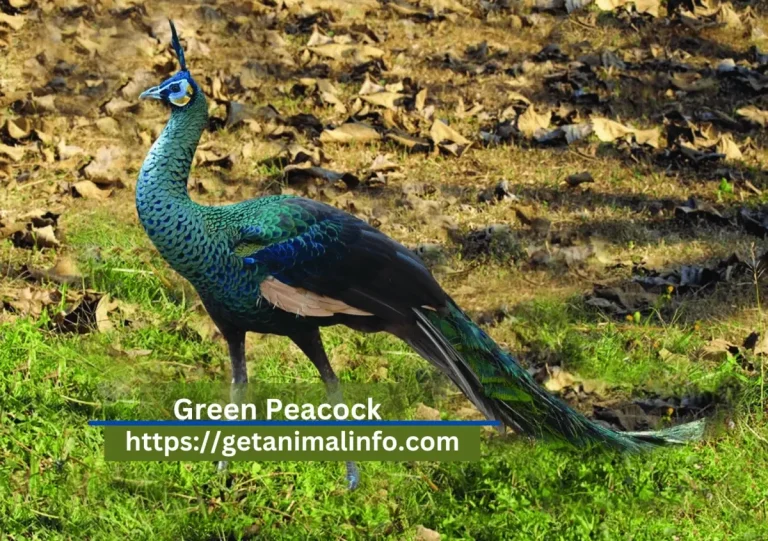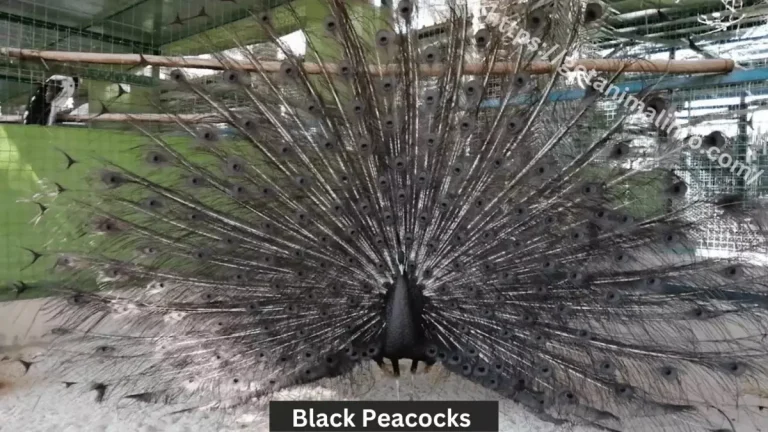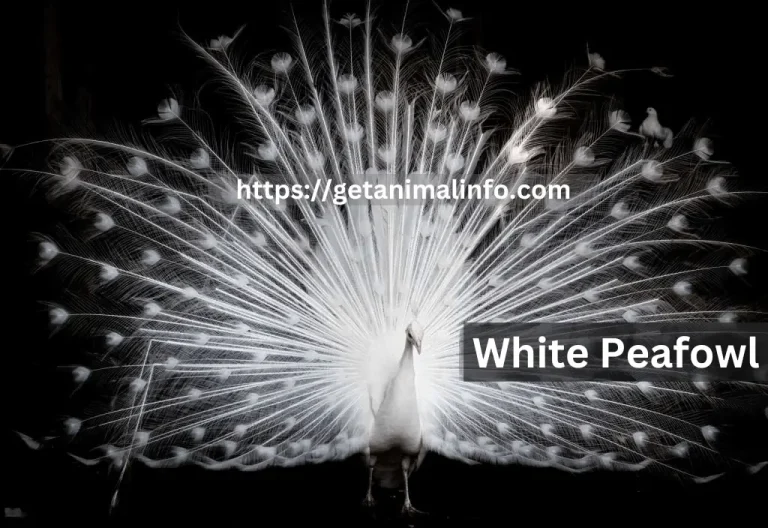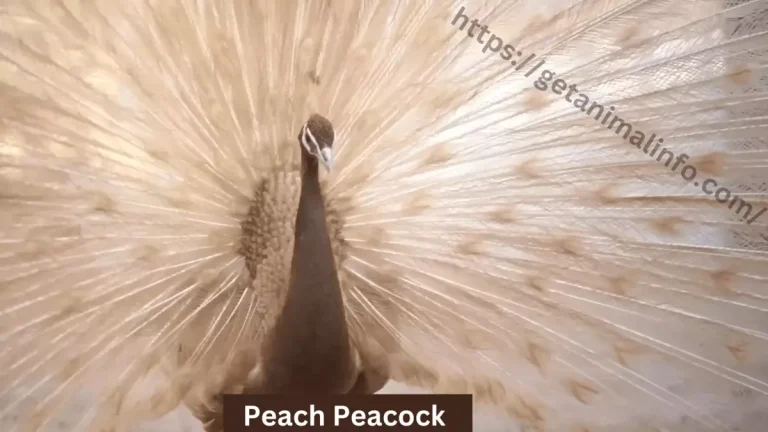Indian Peafowl (Pavo Cristatus)-Origin, Taxonomy, Habitat
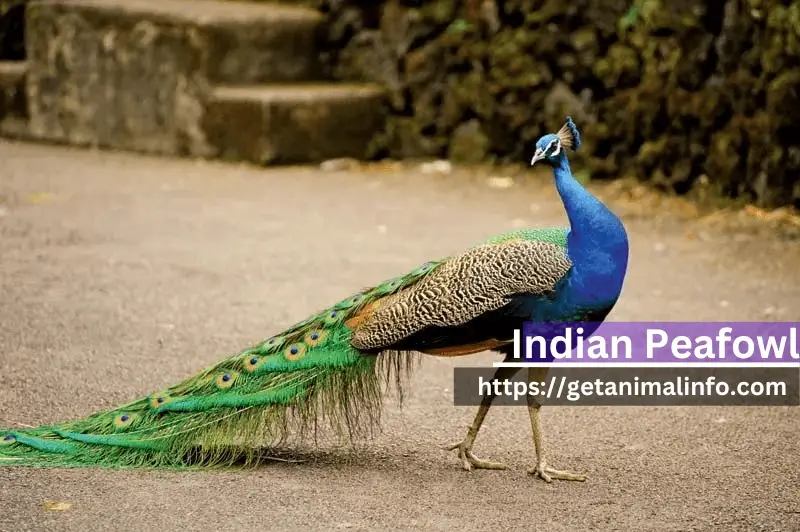
The Indian peafowl is a bird native to the Indian Subcontinent. The bird is the national bird of India. Indian peafowl also known as Blue Peafowl or Common Peafowl. Its scientific name is Pavo Cristatus. It is a big and eye-catching bird from India. What makes it stand out the most is the shiny and colorful feathers of the male, often called a peacock. The female is known as a peahen. She has a more toned-down but graceful look which helps her blend in with nature.
You can also read:
General Information
Characteristic Overview
Personality Overview
Naming of Indian Peafowl
In 1758, Carl Linnaeus gave the name Pavo cristatus to these Indian peafowls in his work called Systema Naturae. This scientific name gives us clues about the peafowl’s biology. The term Pavo points to its bird lineage, and Cristatus means the fancy crest of feathers on its head. This two-part name tells us about the bird’s unique features in the language scientists use to categorize living things.
The word “Peacock” is mentioned in English around 1300. Its spelling variants include pecok, pekok, peacocke, peacock, pyckock, pecokk, poucock, pocok, pokok, pokokke, and poocok among others. In the late 17th century the current spelling was formed.
The Greeks called it “taos” and this was connected to the Persian word “tavus” like in the famous Peacock Throne called Takht-i-Tâvus. The Ancient Hebrew word for peacock was “tuki” possibly linked to the Tamil word “tokei” or sometimes thought to have come from the Egyptian word “tekh.” In modern Hebrew, they call a peacock “tavas”. In Sanskrit, the peacock is called “Mayura” and it’s associated with killing snakes.
In Hindi and Urdu, this beautiful bird is called “maur”. Some people argue that the name of the Maurya Empire might come from this word. It is the empire where the first emperor Chandragupta Maurya was connected to peacock farmers.
Origin and Distribution of Indian Peafowl
The Indian Peafowls originally lived in the lively places of the Indian subcontinent. They like grassy areas, forests, and farms in India. But this stunning bird has traveled to many parts of the world. Either intentionally or unintentionally it has been exported to different countries of the world. You can easily find them in countries like Sri Lanka, Bangladesh, and Pakistan in Southeast Asia, and even in the United States, Australia, and the United Kingdom. This shows how well the bird can live in different weather and places.
These beautiful birds are famous for their shiny feathers and have been loved by different nations because of their undeniable beauty. They can adapt not only to different landscapes but also to rushy places where people live. In northern India, they are protected because of religious beliefs. You can often see them looking for food around villages, they can freely wander there.
They have been in India for more than 5000 years. As far as their transportation in Europe is concerned, we have to see the history of their presence there. Some literature says it might have come to Europe with Alexander the Great or maybe even earlier in Athens by 450 BCE. Nowadays, you can find these birds in many places around the world. In some areas, they have become wild after being brought there.
Taxonomy of Indian Peafowls
The Indian Peafowl is like a regal representative in the diverse world of animals. These beautiful birds capture our hearts with their colorful feathers and friendly behavior. The classification of the Indian Peafowl is like a way of organizing animals. Here’s where the peafowl fits in;
Common Name: Blue Peafowl, Indian Peafowl, Common Peafowl
This way of organizing shows us where the peafowl fits in the big picture of evolution. It emphasizes its bird family and the amazing natural variety.
Color mutation of Indian Peafowls
Indian peafowls are used for genetic color mutation to create peafowls in different colors. All of these special color variants are kept in captivity, not in the wild. They are kept in captivity because of selective breeding. One color variation is called the black-shouldered or Japanned mutation. Initially, some thought it was a different type of Indian peafowl or even a separate species.
A famous naturalist Charles Darwin showed evidence that it’s just a color variation in domesticated peafowls and not a wild species. This was important for Darwin’s theory about how species slowly change through natural selection in the wild. In the black-shouldered mutation, the adult male peacocks have black wings, and young birds are creamy-white with fulvous-tipped wings.
The same gene makes the female peafowls have a lighter color with creamy white and brown markings. There are also other variations in the colors of peafowls like pied, peach, purple, and white. All of these color differences are because of specific genes.
When a male green peafowl mates with a female Indian peafowl, they create a stable hybrid called a “Spalding”. This name refers to the name of a bird enthusiast, Mrs. Keith Spalding. Because of Indian peafowl’s genes, scientists can create color variants in this beautiful bird species. However, these hybrids or their offspring cannot be released into the wild. Because it can cause problems for them as their ability to survive is often reduced. The reason behind their low ability to survive is that birds with unknown parents may not be as strong or healthy. This is a concept known as outbreeding depression.
Physical Appearance
The Indian Peafowl is famous for its stunning appearance that creates a beautiful sight in nature. The male peafowl which is called a peacock is bigger than the female peafowl or peahen. He is like a living artwork with shiny feathers in metallic blues, vibrant greens, and rich bronzes. He has long and fancy tail feathers with unique eye markings. This tail makes a captivating display during courtship. The plumage on the neck and chest is metallic blue making them an adorable-looking bird.
The feathers of the crest or crown are bluish green which makes them look even more majestic. Their length from beak to tail is 100 to 115 cm which is 39 to 45 inches and 195 to 225 cm if the train is fully grown which is 77 to 89 inches. They can have more than two hundred feathers on the train. The weight of an adult peacock is 4 to 6 kg. They have bare white skin around the eyes that makes a crescent shape under the eyes. The tail is rich brown with green and black-eyed feathers.
On the other hand, the female peafowls or peahen have more subtle brown and gray feathers. This color is perfect for blending into their natural surroundings. The peahen is smaller than the male but complements its magnificent look. The length of peahens is 97 cm which is 37 inches. The adult peahen weight can range from 2.75 to 4 kg. Their head is brown and crest wings are chestnut with green tips. Their tail and upper body color is rich brownish. Together, both peacock and peahen showcase the elegance and charm that make them a truly amazing bird in the bird world.
| Measurements | Male | Female |
|---|---|---|
| Height | 40-46 Inches (101-116 cm) | 36-38 Inches (91.50-96.50 cm) |
| Length | 60-88 Inches (152-223 cm) | 35-40 Inches (89-101 cm) |
| Weight | 8.81-13.22 lbs. (4-6 kg) | 5.95-8.81 lbs. (2.70-4 kg) |
Courtship Display
Courtship is a captivating show during the mating season to attract a mate. This display is like a beautiful dance in nature. This impressive dance is mostly done by the male to attract their females. The vibrant feathers of the peacock play a key role in their performance. The performance involves a mix of striking visuals and sounds. The long tail of the peacock has eye-like markings that are in blues, greens, and bronzes. When the peacock spreads its tail feathers in a half-circle in the air, it creates a captivating pattern that looks like eyes staring back. It’s like a kaleidoscope of colors in the air. This display is done to grab the attention of female peafowls or peahens.
The peacock adds a rhythmic and melodious call to their dance to make it more appealing for females. They add a mix of trumpeting and high-pitched sounds that create a unique song. During the dance, the peacocks lift and fan their tail feathers while moving their bodies in beautiful ways. The goal is to create a mesmerizing performance of color and sound to impress and court the females. The female peafowls carefully watch these displays and then choose a mate based on the energy and charm shown during this ornate performance.
This beautiful courtship display is so wholesome that both looks and actions play a role. It’s a peafowl ritual that adds beauty to the natural world. People who love nature visit hundreds of miles to see this beautiful dance of peacocks.
Dietary Habits
Indian peafowls are omniverse which means they enjoy both plant and animal foods. They like seeds and a big part of their diet is finding and eating different kinds of seeds where they live. They use their sharp claws to find seeds in the soil. They are good at spotting insects hidden in plants too, this way they get important proteins.
Peafowls also eat small reptiles like lizards and baby snakes. However, they stay away from big snakes. Besides that, peafowls also enjoy plant-based foods like fruits, leaves, and grains. This highly depends on their habitat environment. Their diverse diet helps to keep the environment in balance.
Cultural Significance
Peafowls are prominent in different cultures. It has significant importance in Hinduism, Buddhism, and Greek Metholog. In Hindu beliefs, many gods are connected with the peacock. Krishna is often shown with a peacock feather in his headband. The followers of Shiva see the peacock as the mount of the God of war, Kartikeya. In one story, the king of the gods, Indra, sought refuge under the wing of a peacock to escape from an opponent then he blessed the peacock with a “thousand eyes” and protection from snakes.
In Buddhism, the peacock symbolizes wisdom. People use peacock feathers in various rituals and decorations. You can find peacock designs in many Indian temples, old coins, textiles, and even in modern art and useful items. In Greek mythology, there’s a story about how the peacock got its colorful feathers. They are associated with Hera and Argus. Yezidism is a Yazidi religion that has the Melek Taus as the main figure, and he is often shown as a peacock. Peafowls are not only a symbol of beauty but they have been associated with Gods in different mythologies and religions.
Breeding in Indian Peafowls
It is a fascinating process linked to the changing seasons, especially during the monsoon. Peafowls are polygamous which means they can have multiple partners. They attract females by arranging an interesting courtship display for them. The male peafowl or peacock flaunts its colorful feathers and dances to attract a mate. The process of breeding usually starts with the arrival of monsoon rains. This season creates good conditions for nesting and finding plenty of food. During this season, peacocks fan out their wings in the air and dance to attract their mating partner. The females carefully watch and choose based on their performances.
Once a pair is formed, the peahen picks a suitable spot and makes a nest that is often hiding in vegetation for safety. She lays eggs in the nest that are usually between 4 to 8. Then she takes care of them for about four weeks. During this time, the peahen is very protective of her eggs. The babies of peacocks are called peachicks. When peachicks hatch, they can move around and take care of themselves to some extent but cannot fly. The mother guides them in finding food, which includes insects, seeds, and small reptiles. The chicks grow quickly with the care and guidance of the peahen and their distinct feathers start to show as they get older.
Habitat
The Indian Peafowl can live in a variety of places because this bird has diversity in nature. Originally they are from the Indian subcontinent so they can be seen in different environments such as grasslands, deciduous forests, and areas with a mix of plants and open spaces. In grasslands, they find lots of seeds and insects to eat. They like to live in open spaces that are perfect places for their impressive courtship displays during mating. Deciduous forests provide places to rest, roost, and make nests. The mix of trees and shrubs helps them hide and stay safe.
Surprisingly, Indian Peafowls have also made themselves comfortable and at home in places where people farm. Some people adopt them as pets and keep them near their houses in gardens. This shows they can live with humans in environments similar to their liking. They have adaptive ability so these birds are found in various climates worldwide. It’s really important to protect the different habitats where Indian Peafowls live to make sure they can survive.
Population and Conservation
The Indian Peafowl is not considered endangered at the moment. According to the recent report of ICUN, they are the “least concern” species. But it is a fact that they face challenges and also need conservation efforts. These challenges include habitat loss, conflicts with humans, and the potential risk of poaching.
A large part of the global peafowl population lives in India because it’s their native region. However, human activities like urbanization and farming have disturbed their natural habitats which makes it hard for them to live peacefully. It’s important to work on conserving and restoring their habitats to ensure that peafowls continue to live peacefully and safely.
Peafowls also have been introduced to various places in their new homes in different countries of the world. The efforts for conservation are also crucial in those places. There should be a balance between enjoying their beauty and making sure of their safety for those who are keeping them as a pet. All the responsible practices must be taken by restoring habitats and creating awareness among the public. The breeders and animal enthusiasts are working on such projects that play a part in their security and safety.
Frequently asked questions
Conclusion
The other name for Indian Peafowl is Pavo Cristatus. They have vibrant blue plumage on their neck and chest which is why they are called Blue Peafowls. Their intricate courtship displays to attract their mates is a perfect representation of nature’s beauty. They have prominent cultural significance in different religions and have a deep association with Gods. They symbolize beauty, royalty, divinity, and luxury. They are not currently endangered but conservation efforts are vital to address habitat threats and ensure their existence in this world for the long run.

